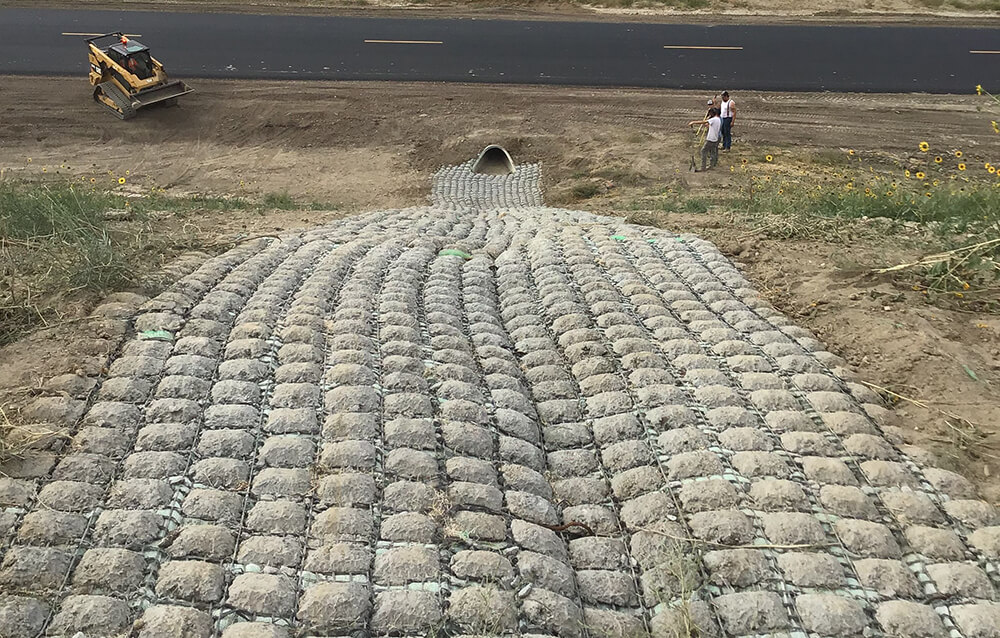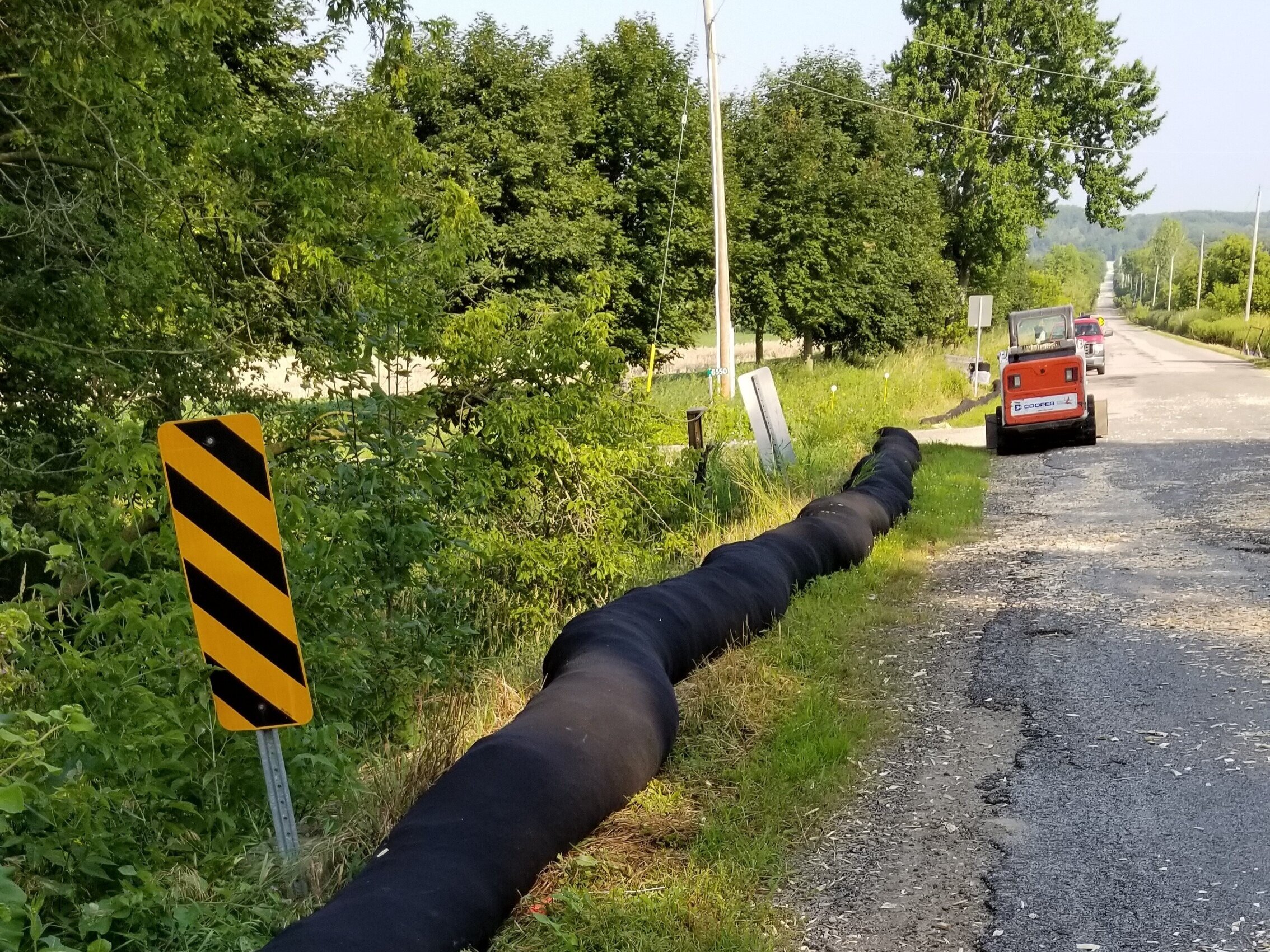Silt Fences: Your First Line of Defense Against Erosion
Ideal Practices for Disintegration Control in Construction Projects
Are you working on a building project and worried regarding erosion control? In this write-up, we will certainly direct you through the ideal methods for avoiding disintegration on your site. silt fences. Obtain prepared to tackle disintegration head-on and guarantee the success of your construction task.
5 Important Erosion Control Strategies

To effectively regulate erosion on your building and construction site, you'll require to execute crucial methods such as incline stabilization and debris control measures. Slope stablizing is vital in avoiding dirt erosion on high slopes. You can attain this by utilizing approaches like terracing, which involves producing straight steps on the incline to reduce water flow and promote the absorption of rain. Another efficient strategy is making use of disintegration control coverings or mats, which are put on the incline and help keep dirt particles while allowing plant life to grow. Sediment control procedures are likewise important to avoid sediment overflow right into neighboring water bodies. One efficient approach is the setup of silt fencings along the border of the building and construction site. These fencings act as obstacles, recording sediment-laden water and enabling it to resolve prior to it reaches the water bodies. Additionally, you can make use of sediment basins, which are temporary retention ponds created to catch debris and permit water to gradually drain off. Carrying out these essential erosion control techniques will help minimize the negative environmental impact of your construction project and guarantee compliance with regulations.
Effective Debris and Overflow Management

You can properly manage sediment and runoff in your construction job by applying correct erosion control steps. Sediment and overflow administration is critical to stop erosion and shield the surrounding environment. One efficient action is the installation of silt fencings along the boundary of the building site. These fences help to have debris and stop it from going into close-by water bodies. Another important practice is the execution of disintegration control coverings or floor coverings. These blankets offer a protective layer on bare soil, decreasing the impact of rains and protecting against disintegration. Furthermore, making use of sediment basins or debris catches can aid to catch sediment and prevent it from getting in stormwater systems. Routine maintenance of these measures is important to ensure their effectiveness throughout the construction task. This includes examining and cleaning sediment containers and routinely replacing silt fencings and disintegration control coverings as required. By executing these erosion control actions, you can effectively manage debris and runoff in your construction project, reducing the influence on the setting and abiding by regulative needs.
Trick Considerations for Slope Stabilization
When taking into consideration incline stabilization, it is necessary to analyze the surface and identify potential areas of instability. You need to very carefully check out the incline's features, such as its structure, angle, and drainage patterns. Search for indications of erosion, such as subjected roots, fractures, or slumping soil. These indicators can give you an idea of where stabilization steps may be needed.
When you have identified the unpredictable locations, you can start carrying out procedures to support the slope. One typical technique is making use of keeping wall surfaces or terracing to create a collection of level steps, which can aid disperse the weight and protect against more erosion. Another choice is to plant vegetation on the incline, as the origins can assist anchor the dirt and control erosion. Additionally, setting up erosion control blankets or mats can offer instant protection while plant life becomes recognized.
It's crucial to routinely check the supported slopes to guarantee their effectiveness. Maintain an eye out for any kind of indicators of movement or erosion, and take prompt action if required. Regular maintenance, such as inspecting and repairing any type of broken measures, is additionally vital to ensure long-lasting security.
Ideal Practices for Greenery and Soil Security
If necessary,One effective method to safeguard vegetation and soil on slopes is by on a regular basis examining for indications of erosion and taking instant activity. By being observant and proactive, you can avoid further damage and ensure the security of the slope. Begin by checking the incline for any type of indicators of disintegration, such as subjected origins, bare soil spots, or sediment buildup at the base. It is crucial to attend to the concern without delay if you notice any of these indications. Implement disintegration click control steps such as installing disintegration control blankets, mulching, or also constructing preserving wall surfaces if required. Furthermore, growing vegetation can dramatically assist in supporting the dirt. Select indigenous plants that have deep origin systems, as they are a lot more reliable in stopping disintegration. Make certain to frequently assess the wellness of the plant life and give required upkeep, like watering and fertilizing. Remember, erosion can promptly worsen and cause extreme damages, so it's vital to address it as soon as feasible. By taking proactive procedures and frequently keeping track of the slope, you can protect the greenery and dirt, guaranteeing the lasting security of the area.
Carrying Out Correct Water Drainage Solutions
To efficiently implement proper drainage systems, it's important to think about the incline gradient and dirt type. When it comes to handling water circulation and avoiding disintegration, recognizing these variables is important. The incline gradient plays you could try here a considerable role in identifying exactly how water moves throughout the land. Steeper slopes can bring about faster water circulation, enhancing the risk of erosion and flooding. On the various other hand, gentler slopes permit water to move a lot more slowly, minimizing disintegration potential. By examining the incline gradient, you can design an effective water drainage system that accommodates the all-natural water activity.
Sandy soils often tend to drain pipes faster due to their coarse appearance, while clay soils have a slower water drainage price due to their compact nature. Furthermore, taking into consideration the dirt qualities helps avoid waterlogging, which can lead to inadequate plant growth and damage to structures.
Verdict
Finally, when it comes to disintegration control in construction jobs, you must comply with these best methods. Execute efficient debris and overflow monitoring strategies to stop air pollution. Consider slope stabilization approaches to make certain the security of the site. Protect vegetation and dirt by utilizing appropriate actions. Develop correct drainage systems to handle water flow (Memphis Erosion Control Solutions Memphis TN). By adhering to these crucial practices, you can successfully manage erosion and ensure the success of your building task.
To efficiently control disintegration on your building site, you'll need to implement vital strategies such as incline stablizing and debris control procedures. Incline stabilization is essential in stopping soil erosion on high slopes. An additional efficient technique is the usage of erosion control coverings or mats, have a peek here which are positioned on the slope and help maintain soil fragments while enabling plant life to grow. An additional option is to grow vegetation on the incline, as the roots can assist anchor the soil and control disintegration. Implement erosion control actions such as setting up disintegration control blankets, mulching, or also constructing preserving walls if required.